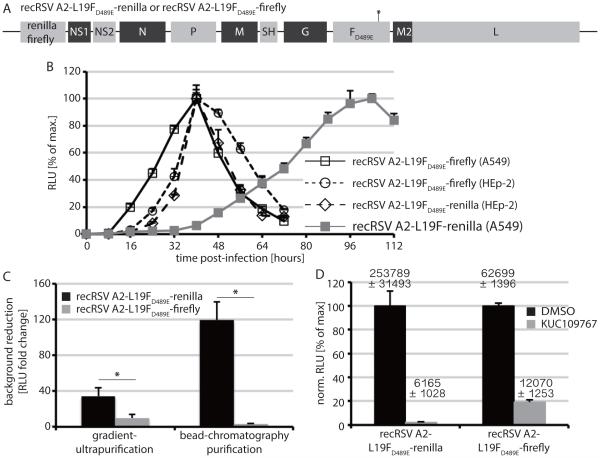Figure 2.
Development of second-generation recRSV reporter strains. A) Schematic of the recRSV-L19FD489E-firefly and renilla luciferase genomes. B) Reporter expression profile after infection with recRSV-L19F-renilla or newly generated recRSV-L19FD489E-firefly or recRSV-L19FD489E-renilla (MOI 0.3 each; instrument gain 200). Values represent cell-associated luciferase activities and were normalized to the highest signal of each series (N ≥ 3; means ± SD are shown). Purification of recRSV-L19FD489E-firefly and recRSV-L 19FD489E-renilla progeny virions through different techniques. RLUs in virus stocks before and after purification were determined and background clearance (RLUbefore/RLUafter) calculated (N = 3; means ± SD are shown; 2-tailed t-test, *: p < 0.05). D) Signal window of the recRSV reporter strains. A549 cells were exposed at infection to 10 μM KUC109767, an inhibitor of RSV RdRp activity 86, or the vehicle (DMSO) volume equivalent. RLUs were determined 44 hours post-infection and values normalized for vehicle controls (N = 3; means ± SD are shown); numbers above the columns show raw data means ± SD.

